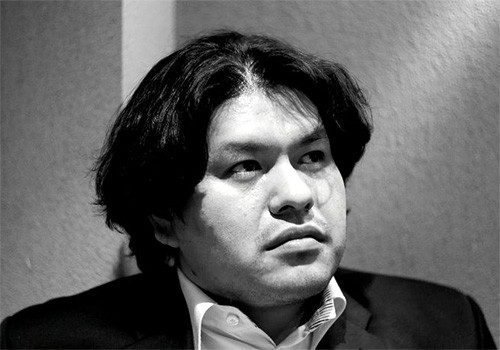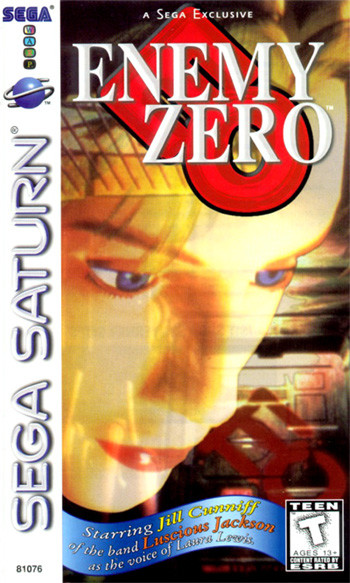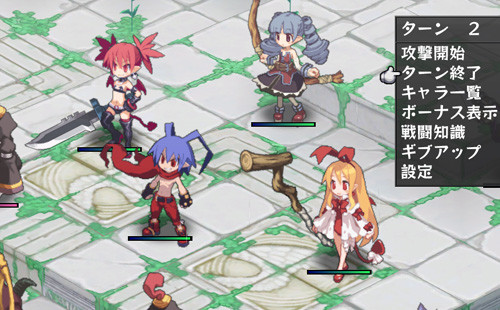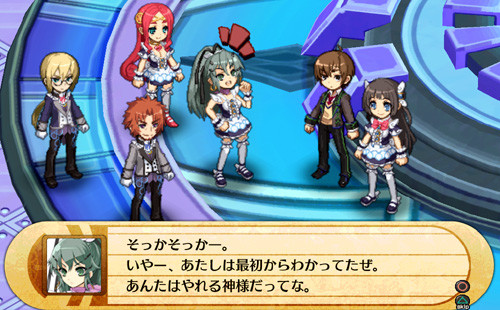- remind me tomorrow
- remind me next week
- never remind me
The X Button
Timely Paradox
by Todd Ciolek,

Once again we say farewell to a piece of the video-game press. Several pieces, in fact. It wasn't even a month ago that Ziff-Davis bought up IGN and its attendant sites, and last week we saw the results: UGO, GameSpy, and 1up will all shut down.
The loss of 1up stings particularly hard for me, as I contributed features there for the past year and change. The site began as an off-shoot of Electronic Gaming Monthly and other Ziff-Davis magazines back in 2003, and it earned a rather nice reputation. Yet the money side of it didn't hold up, and the site was sold to IGN's backers a few years ago.

After losing staff members and funds, 1up editor-in-chief Jeremy Parish and his remaining colleagues made a bold decision: instead of pursing the same news and exclusives as every other site, 1up would concentrate on “cover stories” that ran a week's worth of features on the same subject. And it paid off. The site tackled all sorts of subjects, providing in-depth material that you couldn't find anywhere else. I was only a small part of this, but I greatly enjoyed researching and writing about everything from Mega Man's anime roots to the untimely fates of Alex Kidd and the Neo Geo Pocket Color.
The loss of 1up makes we wonder just where game journalism might be headed. Do we face an unpleasant future where everyone chases the latest, shiniest, and most quickly outdated news stories? Will websites like Gamasutra and the newly launched Polygon collapse as soon as their parent companies find them redundant? And what do readers really want out of the video-game press anyway?
The last one is particularly hard to answer. Some demand a professionalism that's rare even in serious mainstream news, some want constant entertainment, and others just want reviews they agree with. Indeed, there's a weird sense of tribalism that pops up when any given message board discusses what's wrong with game journalism; someone's bound to answer “[name of message board] is the only place I trust” whether that board is GameFAQs or the forums for the public library in Eunice, Louisiana.
I'm not sure where games journalism will go from here, but I'm certain it'll be a little less interesting without 1up.
NEWS SPECIAL: KENJI ENO
Kenji Eno was arguably the most daring game designer of the 1990s. No one else created a game driven entirely by sound. No one else defied Sony by announcing a Sega Saturn exclusive at a PlayStation convention. No one else created a game and hand-delivered the limited edition of it across Japan. Kenji Eno did all of this. So it was an exceptional loss last week when the news broke that Eno had died from hypertension-related heart failure at the age of 42.

Eno began his career contributing to some disposable Famicom games: an Ultraman title here, an Altered Beast port there. Upon starting a development house called EIM, Eno had a hand in NES titles like Casino Kid II, the now-rare Panic Restaurant, and a Superman game that was retooled into the license-free Sunman before being canceled entirely. Eno moved on, founded a new studio called Warp, and succeeded in the harsh terrain of the 3DO. The console lacked strong support among Japanese developers, but Warp contributed some notable oddities, including a puzzle game called Trip'd and the Japan-only board-game sim Oyaji Hunter Mahjong. Featuring animation by Ichiro Itano of Macross and Angel Cop fame, the game casts players as a superhero who rescues women from street perverts. This was far from Eno's strangest idea.

Warp's biggest success on the 3DO was D, a graphic-adventure game that followed one Laura Harris on a bizarre trip through her murderous father's psyche. The game's slow pace and full-motion-video sequences would not age terribly well, but D nonetheless made a mark with its gruesome imagery (most of which Eno snuck past the censors by switching production discs). In an age where attempts at “interactive movies” typically meant C-list talent fumbling around in grainy footage, Eno was among the few game creators to get it right.

Eno's knack for the genre continued with Enemy Zero, a clearly Alien-inspired thriller with first-person shooting and a new role for Warp's “digital actress” Laura. Unlike a pure action game, Enemy Zero forced players to use sonar to track an invisible monster, and it proved a unique (if short) fixture of the Sega Saturn's library.
Enemy Zero stood out in other ways thanks to Eno's uncompromising habits. The game was intended to be a PlayStation exclusive, but Eno grew dissatisfied with Sony's treatment of D. Enemy Zero then switched systems at Sony's own industry event, where Eno introduced the game with a PlayStation logo that morphed into a Saturn one. The game's Japanese launch included a super-limited edition that Eno personally took to the twenty people who purchased it. Enemy Zero also showed off the early work of Warp staffer Fumito Ueda, who'd later direct Ico and Shadow of the Colossus at Sony.
Eno's second Saturn project proved even more surprising. Real Sound presented itself like a visual novel, but instead of relying on graphics, the game guided players with voice acting, sound effects, and music. It was later ported to the Dreamcast, where Eno would craft his last major console effort: D2. A horror-themed fusion of exploration, shooting, and RPG-like battles, D2 proved notable in the Dreamcast's first year. Yet it wasn't released overseas until 2000, and the game only stood out amid the second round of Dreamcast titles due to Sega's censorship of a tentacle-violation scene.
Eno pursued game development less and less in the decade that followed, though he created You, Me, and the Cubes for WiiWare and collaborated with Kenichi Nishi on the iPhone game Newtonica. Even with few recent works, there's so much more to tell about his career, from his music to his remarkable stories about everything. To anyone who wants to shake the game industry, Eno remains an inspiration.
FEATURE: NIS AMERICA'S NEXT ROUND
Nippon Ichi Software's appeal is twofold. The developer's catalog leans heavily on the modern anime aesthetic of wide-eyed characters that fill a variety of archetypes. On top of this the company ladles generous portions of self-mockery; the Disgaea series alone lampoons RPG structure, hellish tyrants gone soft, and a fragile fourth wall that allows characters to gripe openly about their lack of screen time.
The NIS fanbase's second major support comes from the stat-obsessed, level-grinding maniacs who relish the idea of breaking open a game's mechanics and exploiting them however they please. NIS games freely reward this with elaborate bonus levels and combo systems that drive hit counts past the four-digit mark. And the latest announcements from NIS America straddle these two fields as best they can.
DISGAEA D2: A BRIGHTER DARKNESS
Platform: PlayStation 3
Release Dater: Fall 2013
In the minds of many series followers, Disgaea D2: A Brighter Darkness is the sequel that NIS should've made back in 2004. Three other Disgaea games followed the original, but they introduced largely new casts each time around, and the first game's trio of petulant ruler Laharl, crafty underling Etna, and goody-goody angel Flonne was relegated to cameos and supporting roles. Yet D2 (the D stands for “Dimension”) directly follows the Disgaea that started everything, and it once again finds Laharl, Etna, and Flonne in a realm of quibbling monsters and comical ambitions.

For Anime Fans: Disagea D2 returns to the underworld of the first game, finding Laharl at the head of his Stygian empire. To keep his throne he must contend with the usurper demon Barbara, the strange interloper Xenolith, and an outbreak of repulsively sweet flowers from the heavens above. Disgaea D2 also updates itself to suit modern anime trends: the game introduces Laharl's alleged little sister Sicily, and one stretch of the story sees Laharl turned into a girl.
For Strategy Fans: Disgaea's customization remains in the sequel, and players create new warriors and enhance them through a master-pupil system. In battle, characters have more opportunities for combos, including the chance to ride on penguin-demon Prinnies and other monsters. Disgaea's Item World also gives way to an Item Sea in Disgaea D2, where Laharl and his allies hunt for pirate treasures in a randomly generated expanse.
THE GUIDED FATE PARADOX
Platform: PlayStation 3
Release Dater: Fall 2013
No, that's not a mistranslation. Nippon Ichi's latest original game was released as The God and Fate Revolution Paradox in Japan last month, but NIS America had a little fun with the game's North American title (and, if I may speculate, dodged any objections about anti-religious themes). The game follows high-schooler Renya Kagurazaka's abrupt path to godhood, which results from a contest at a local mall. Once drafted into heavenly service, Renya goes on forays throughout the Copy World, a series of randomly generated dungeons. His goal is to grant some real-world wishes, be they Cinderella daydreams or something less fanciful.

For Anime Fans: Renya has a host of angelic assistants dressed in celestial maid attire, and they range from sweet-natured Lilliel Saotome to the deadpan Neliel Tojo. Oh, and all the characters were designed by Haruhi Suzumiya's Noizi Ito. Nippon Ichi's penchant for cameos is also apparent, and Renya recruits Valvatorez from Disgaea 4, Raspberyl from Disgaea 3, and Asagi from…well, she doesn't have her own game. That's the joke.
For Strategy Fans: The chance-arranged levels of The Guided Fate Paradox give it a feel closer to that of a dungeon hack, though the game borrows much of Disgaea's crazed excess. Characters can be customized with robotic legs, tank treads, and all manner of weapons, while levels might find parties battling on every side of a cube.
TIME AND ETERNITY
Platform: PlayStation 3
Release Dater: Summer 2013
Some games tend to position women as either shy flowers or vicious, half-crazy typhoons, but Imageepoch's Time and Eternity needs no such divide. Released last year as Toki To Towa, the RPG finds the player's self-insert hero on the eve of his marriage to a nice red-haired girl named Toki. And then he's dead. Assassins stab him during the ceremony, and Toki responds by revealing her blonde alter-ego Towa, who beats down the wedding-crashers. Toki and Towa then head back in time to prevent the tragedy, a process that leaves the hero's soul stuck in the body of Toki's little dragon sidekick.

For Anime Fans: Time and Eternity tries hard to be a playable cartoon with its detailed, hand-drawn characters, all of whom could've stepped out of any given anime season. The interplay between Toki and Towa also extends to inner conversations and a strange sort of romance: they're two distinct women, but both are in love with the player-named hero. Is that a stroke of introspection or wish fulfillment?
For Strategy Fans: As an Imageepoch title, Time and Eternity doesn't have the same voluminous reaches of Nippon Ichi Software's first-party titles. The game's battles play out with Toki and/or Towa taking on monsters while the player's baby-dragon form assists, and most of the variety comes in the weaponry; Toki prefers rifles and long-range magic, while Towa's more willing to go hand-to-hand.
THE OTHERS
Also on NIS America's 2013 schedule is The Witch and the Hundred Knights, a PlayStation 3 action-RPG in which players control the summoned minion of a swamp witch. The game was announced a while ago, but it has no firm release date in either Japan or North America.
The biggest mystery in NIS America's lineup is Black Rock Shooter: The Game. Another Imageepoch creation, the PSP title is part of a multi-media blitz surrounding a futuristic gunslinger and her rivals. While the game arrived in Japan in 2011, Imageepoch and NIS America haven't yet made good on their promise to release it here. They haven't forgotten, though. An NIS America rep stated “We are still planning to release Black Rock Shooter, and we are hoping to make some announcement soon.”
THIS WEEK'S RELEASES
PHANTOM BREAKER: BATTLE GROUNDS Developer: 5pb/Division2
Developer: 5pb/Division2 Publisher: 5pb Platform: Xbox Live Arcade Release date: February 27 MSRP: 800 Magic Microsoft Points Here's something you don't see every day: a spin-off game that's announced, developed, and released in North America before the title that inspired it. The full-fledged Phantom Breaker fighting game was supposed to hit the Xbox 360 last year, but 7sixty has delayed and obscured it so many times that some websites yanked it from their release lists. Meanwhile, Phantom Breaker: Battle Grounds trudges onward to the Xbox Live Arcade. Of course, Battle Grounds has an easier time of things, being a downloadable title with deliberately old-fashioned aims. It's a brawler that adopts the graphic quality of an 8-bit title, albeit with better animation than any NES or Master System game could manage. It stars pixelly, big-headed versions of the original Phantom Breaker's swordswoman Mikoto Nishima, cat-eared Cocoa, mace-swinging amnesiac M, naginata-wielding priestess Waka Kumon, ninja Yuzuha Fujibayashi, and a girl named Itsuki Kouno. The trailer describes her as an “ally of justice” even though she's dressed like a maid. I'm sure there are few hidden characters in there as well, since the no-show Phantom Breaker had over a dozen warriors. All of the initially playable heroines bash their way through side-scrolling street levels full of cyborg gangsters, ganguro, cavorting otaku, and other threats. The characters move much like the cast of Guardian Heroes or Code of Princess, leaping between different planes of movement in each stage. Within each plane, they unleash various attacks and grab the coins left by vanquished foes. The game also sports a four-player arena and co-op play, inviting both online and local partners. All of that makes Battle Grounds look a little sharper than the oft-derided fighter that spawned it, and with any luck it won't land in the same delay-plagued purgatory. |
The PSP revamp of Persona 2: Eternal Punishment still hasn't found its way to North America, but the next best thing is now on the PlayStation Network. This original Eternal Punishment, released in the U.S. back in 2000, doesn't have the PSP port's extra story bits, but it's only ten bucks. And it may well be the only version of Eternal Punishment we'll ever see here.
NEXT WEEK'S RELEASES
ATELIER AYESHA: THE ALCHEMIST OF DUSK Developer: Gust
Developer: Gust Publisher: Tecmo Koei Platform: PlayStation 3 Release date: March 5 MSRP: $49.99 Here's something you don't see every day: a publisher competing against itself. NIS America revealed plans to localize Atelier Ayesha: The Alchemist of Dusk last summer, as they've handled several previous games in the franchise. However, Tecmo Koei merged with Atelier series developer Gust, and so Tecmo Koei's publishing NIS America's localization of Ayesha in North America. In fact, Tecmo Koei will release it just a week before NIS America brings out their own Hyperdimension Neptunia Victory, which will prompt some harsh and/or pricey decisions among those who adore RPGs about doe-eyed anime heroines. Tecmo Koei's also drawn some fan ire for using only Ayesha's English voices, while NIS America often includes both English and Japanese tracks. That alone could swing customers. The Atelier series recently wrapped up its Arland sub-trilogy, so Ayesha starts out with a new heroine and largely new territory, all of which calculatedly invite the player's sympathies. Ayesha lives all alone in a woodland studio, as her grandfather passed away and her sister Nio disappeared during a reckless herb hunt. So you, the player, must root for Ayesha as she seeks Nio among nearby ruins, and she's joined by a profiteering archeologist, an alchemist, a dragon hunter Juris, and a witch who longs to fly. The battle system features more roaming than prior Atelier titles, but greater emphasis is once again placed on the alchemy side of things. Ayesha discovers all sorts of ingredients during her searches and struggles, allowing her to make potions, weapons, confectionery, and other RPG staples. And that's always the real focus of an Atelier game.
|
CASTLEVANIA: LORDS OF SHADOW: MIRROR OF FATE Developer: MercurySteam
Developer: MercurySteam Publisher: Konami Platform: Nintendo 3DS Release date: March 5 MSRP: $39.99 Here's something you…er, I suppose that's enough of that. Well, Castlevania: Lords of Shadow: Mirror of Fate is rare in its own way. It's the 3DS sequel to Konami and MercurySteam's reinvention of the Castlevania franchise. But while Lords of Shadow put Castlevania stylings on a 3-D action game, this Mirror of Fate follows those branching “Metroidvania” titles that defined the series on portable systems. But that imitation only goes so far. The game has a spacious castle to explore in a non-linear fashion, but it clings tight to the combat elements of Lords of Shadow in its close-ups of special attacks and vicious boss encounters. It shuns the RPG-like upgrades of Symphony of the Night and its ilk, preferring the varied sub-weapons of older Castlevanias. Mirror of Fate also continues the Lords of Shadow reboot of familiar Castlevania doctrine. Set a quarter-century after the original Lords of Shadow, this 3DS game finds Gabriel Belmont now fully transformed into the recurring antagonist Dracula. Facing him are three other reimagined Castlevania characters. Castlevania III's Trevor Belmont is now Gabriel vampire-hunter son, Castlevania mainstay Simon Belmont is Trevor's son, and recurring antihero Alucard is now…well, that's supposed to be a surprise. Such changes might not win over cranky old Castlevania fans, and Mirror of Fate is part of the franchise's new direction despite its explorative stretches. Its 3-D visuals evoke MercurySteam's brand of Castlevania, and the storyline arranges everything for Lords of Shadow 2. That said, Mirror of Fate clearly won't be the worst take on Castlevania. That honor still rests with Captain N: The Game Master and its radical skateboardin' Alucard.
|
NARUTO POWERFUL SHIPPUDEN Developer: Inti Creates
Developer: Inti Creates Publisher: Namco Bandai Games Platform: Nintendo 3DS Release date: March 5 MSRP: $39.99 Most of the Naruto games on handhelds are swiftly forgotten, particularly in the face of the major Naruto console games. Yet Naruto Powerful Shippuden has a few marks in its favor. It's the first 3DS Naruto game seen on these shores (2011's The New Era mysteriously skipped North America), and it's the first Naruto game handled by Inti Creates. An underrated little developer, Inti Creates was behind the Mega Man Zero series as well as Mega Man 9 and 10 (and, uh, Gal Gun, but we won't hold that against them). Their approach to Naruto Shippuden acknowledges something that the manga and anime have known for some time: fans like Rock Lee just as much as they like Naruto. So Naruto Powerful Shippuden divides itself between the Naruto setting and Rock's own little story. Not that either realm is serious in tone. Everyone, from the two heroes to the disposable pawn ninja, wanders around with a giant head. The exaggerated look of Naruto Powerful Shippuden fits with the game's brawler mindset, as Naruto and Rock use their various techniques to dispatch one mission's worth of thugs after another. The numerous bosses include mentors like Kakashi and Might Guy as well as genuine antagonists like Orochimaru and the nefarious Dark Naruto (yes, Dark Naruto), and the two heroes can call on a dozen supporting characters, such as Sakura, Shikamaru, Sai, Tenten, Gaara, Hinata, Ino, Kiba, and, well, Kakashi and Guy. Yet they're limited to popping on-screen to temporarily aid the two lead ninja. This makes for a somewhat narrow focus for a Naruto game, but perhaps Inti Creates will prove themselves in the gameplay proper.
|
NARUTO SHIPPUDEN: ULTIMATE NINJA STORM 3 Developer: CyberConnect2
Developer: CyberConnect2 Publisher: Namco Bandai Games Platform: PlayStation 3/Xbox 360 Release date: March 5 MSRP: $59.99 Yes, this would be one of those above-mentioned major Naruto console games. Ultimate Ninja Storm 3 is the latest Naruto fighter from CyberConnect2 (which develops things like Solatorobo when they're not busy with anime licenses), and it grabs a big chunk of the Naruto cast and storyline. Beginning with a look at Naruto's rather troubled birth, the game leaps into the Five Kage Summit storyline and follows it all the way through the manga's current Shinobi World War arc. To that end, the playable lineup gathers a supposed 80 characters, ranging from the usual suspects like Kakashi, Sakura, and Gaara to the newly included reincarnated warriors Fu, Asuma, Deidara, Hanzo, Mu, Nagato, and Madara Uchiha. Granted, Namco Bandai might be counting different costumes among those 80 characters, but at least the extra outfits include something never before found in the series: Naruto dressed as Dragon Ball Z's Goku. Ultimate Ninja Storm 3 refines the combat of its predecessors by adjusting the Awakening system. Characters can now break out into their more powerful incarnations at any time, opening up new and destructive combo strikes. CyberConnect2 made it a little easier to counter this new strategy, as Awakened characters are vulnerable to ultimate jutsu attacks. Support characters also play a stronger role in matches, though they're susceptible to damage and can be knocked out of commission, much like the teammates of later Marvel vs. Capcom games. CyberConnect2 even took pains to sharpen up the game's effects and character models, and it might be the sharpest that Naruto's ever looked in a video game.
|
The big new Tomb Raider arrives on the PlayStation 3 and Xbox 360, bringing with it a retelling of Lara Croft's origins and possibly some debate about how women are portrayed in games.
discuss this in the forum (47 posts) |